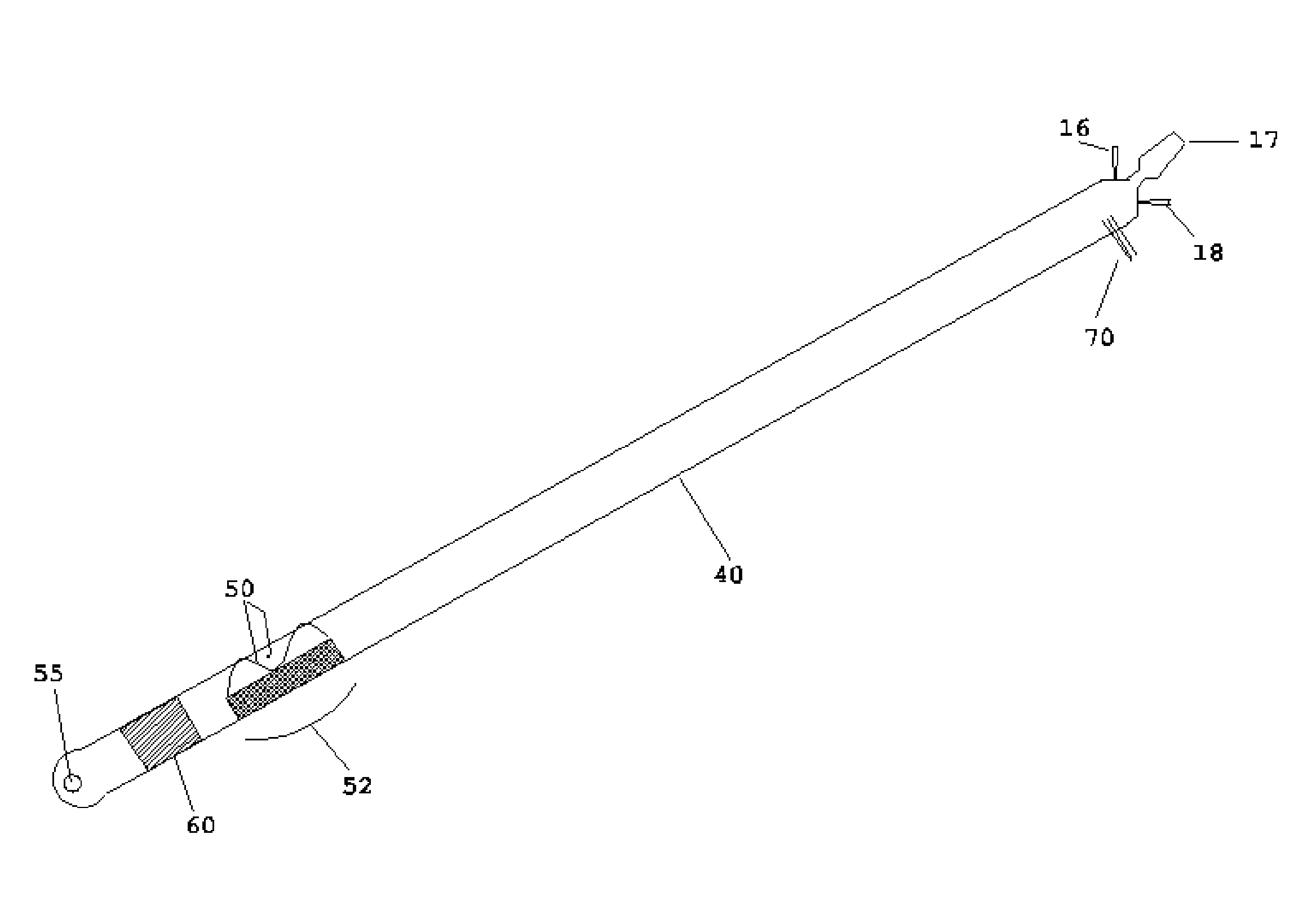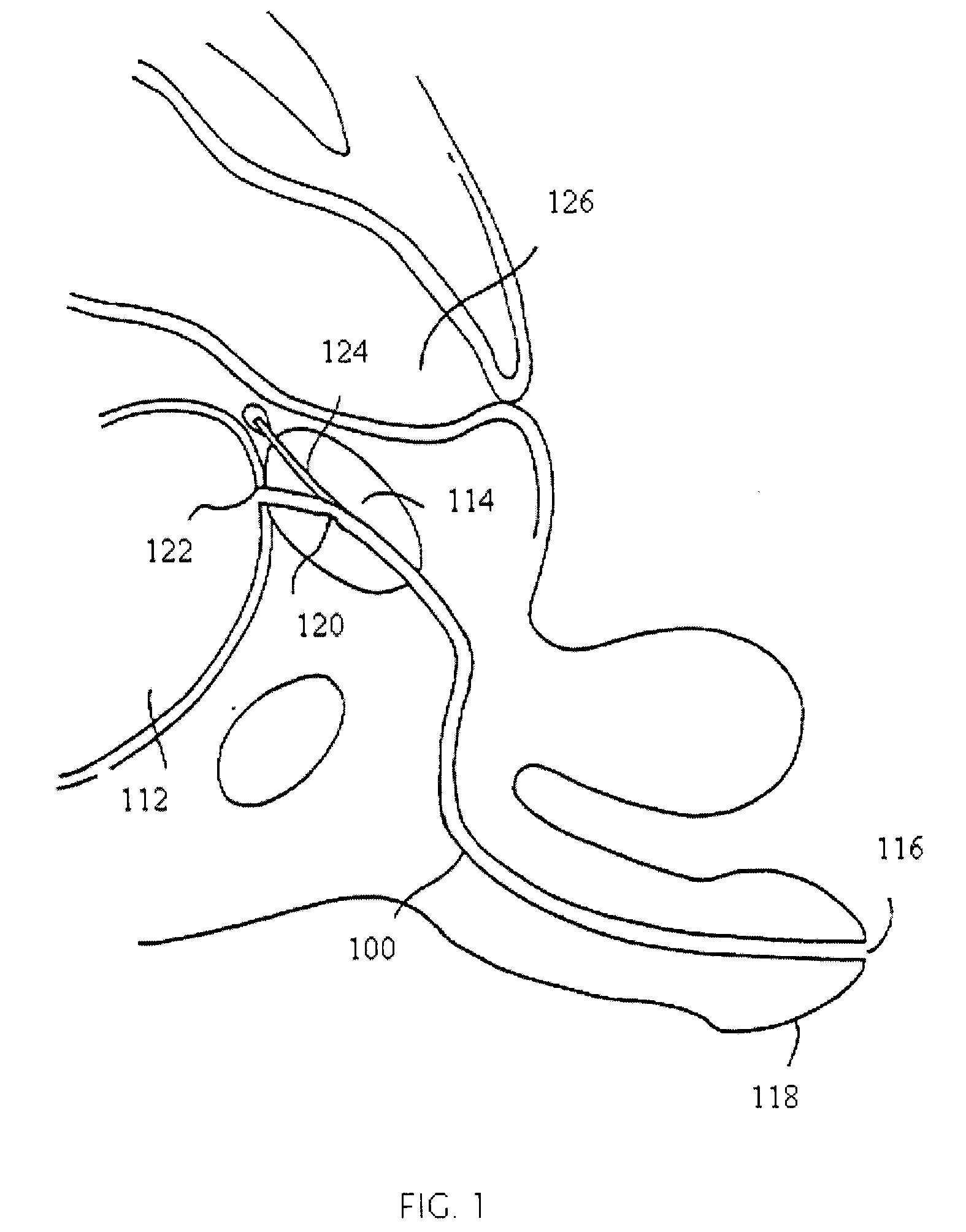Device for local ablation of tissue
a tissue and local ablation technology, applied in the field of tissue local ablation devices, can solve problems such as retrograde ejaculation, general anesthesia and an hour or more of costly operating room time, and world-wide problems, and achieve the effect of preventing thermal damag
- Summary
- Abstract
- Description
- Claims
- Application Information
AI Technical Summary
Benefits of technology
Problems solved by technology
Method used
Image
Examples
Embodiment Construction
[0020] While this invention is susceptible of embodiment in many different forms, specific embodiments are shown in the drawings and are described herein in detail, with the understanding that the present disclosure is to be considered as an exemplification of the principles of the invention and is not to be limited to the specific embodiments illustrated.
[0021]FIG. 1 is a vertical sectional view of a male pelvic region showing the effect benign prostatic hyperplasia, BPH, has on the urinary organs. Urethra 100 is a duct leading from bladder 112, through prostate 114 and out orifice 116 of penis end 118. Benign tumorous tissue growth within prostate 114 around urethra 100 causes constriction 120 of urethra 100, which interrupts the flow of urine from bladder 112 to orifice 116. Heating and necrosing the encroaching tumorous tissue can effectively remove the tumorous tissue of prostate 114, which encroaches urethra 100 and causes constriction 120. Ideally, with the present invention...
PUM
 Login to View More
Login to View More Abstract
Description
Claims
Application Information
 Login to View More
Login to View More - R&D
- Intellectual Property
- Life Sciences
- Materials
- Tech Scout
- Unparalleled Data Quality
- Higher Quality Content
- 60% Fewer Hallucinations
Browse by: Latest US Patents, China's latest patents, Technical Efficacy Thesaurus, Application Domain, Technology Topic, Popular Technical Reports.
© 2025 PatSnap. All rights reserved.Legal|Privacy policy|Modern Slavery Act Transparency Statement|Sitemap|About US| Contact US: help@patsnap.com



